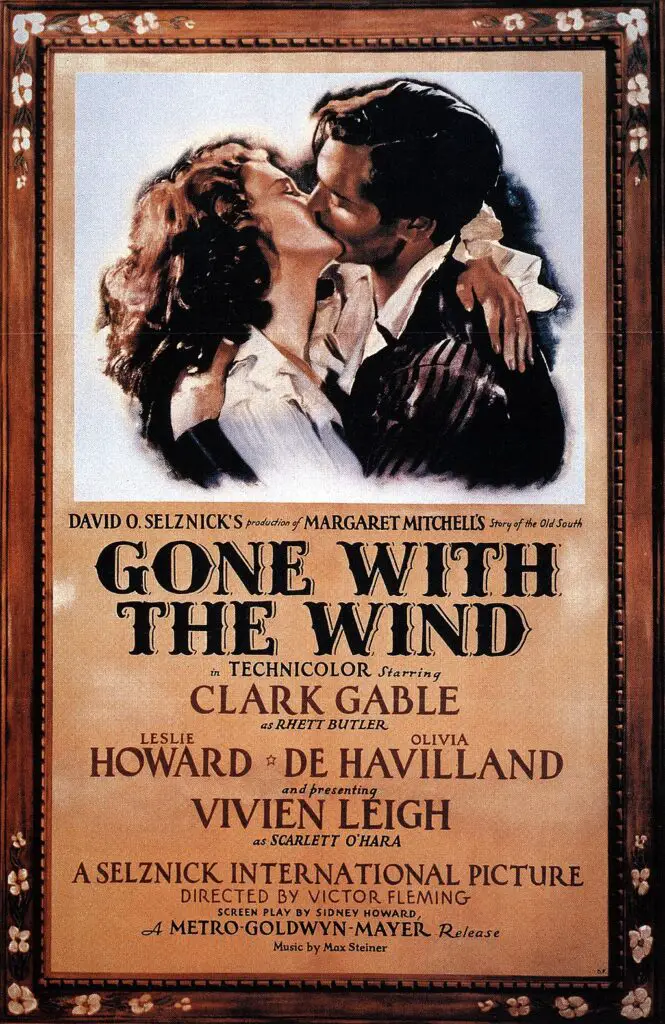Imagine sitting in the hush of an epic cinematic experience, a film transporting you into another universe, and when the curtains roll, you realize you have been part of something truly colossal and monumental. This essay explores such an exemplary cinema masterpiece – the highest grossing film in cinematic history. This discovery unravels its production journey, from its conception to its eventual grand release. Delving into the intriguing aspects of its immense commercial and critical successful reception across the globe, we will also uncover its significant awards and acclaimed reviews. Moreover, the broader societal and cultural impact that this film has had, its lasting legacy, and its influence on modern cinema and popular culture will also invite our consideration.
Identifying the Highest Grossing Film
Identification: The Highest Grossing Film of All Time
The highest grossing film of all time, is the 2019 Marvel cinematic universe film, “Avengers: Endgame“. Directed by the Russo Brothers, the film broke numerous box office records and currently holds the top spot for the highest-grossing film ever in the worldwide box office.
“Avengers: Endgame” is the culmination of a series of Marvel films leading up to an epic showdown between the Avengers and their greatest adversary yet, Thanos, played by Josh Brolin. The movie features an ensemble cast which includes well-loved actors such as Robert Downey Jr., Chris Evans, Mark Ruffalo, Chris Hemsworth, Scarlett Johansson, and Jeremy Renner, among others.
Box Office Totals: Bigger Than The Rest
On its opening weekend alone, “Avengers: Endgame” grossed an unprecedented $1.2 billion globally. The mind-boggling figures continued to roll in, and the movie eventually reached a gross total of nearly $2.8 billion by the end of its theatrical run, thus surpassing the previous record-holder, “Avatar” by James Cameron.
While “Avatar” was praised for its visual effects and use of 3D technology, its inflation-adjusted global takings of around $2.84 billion were not enough to retain the top spot. “Avengers: Endgame” took full advantage of the Marvel franchise’s dedicated fan base and the global popularity of the superhero genre, to become the highest grossing movie ever.
With Inflation Adjustments

After adjusting for ticket price inflation, however, the highest grossing film title goes to “Gone with the Wind”. Premiered in the year 1939, “Gone with the Wind” reportedly grossed approximately $400 million globally on its initial release. However, when adjusted for inflation, the film has generated an equivalent of around $3.7 billion in 2021 dollars.
“Gone with the Wind” is an American classic adapted from the 1936 novel by Margaret Mitchell. The movie, which takes place in the southern United States during the Civil War, was praised for its cinematography, narrative, and performances — particularly those of its leads, Vivien Leigh and Clark Gable.
“Avengers: Endgame,” directed by the Russo brothers, currently reigns as the highest grossing film in terms of worldwide box office revenue. However, when adjusting for movie ticket inflation, the crown goes to the beloved classic, “Gone with the Wind”. These two films demonstrate the impact of powerful storytelling and engaging cinema that resounds with audiences across the globe, generating massive commercial success.

Production and Release
Moving onto ‘Avatar’: Its Production and Star-Studded Line-Up
The maker of other high-grossing epics such as “Titanic”, James Cameron, also directed “Avatar” – another film contending for the title of highest-grossing movie of all time. The journey for Avatar started back in 1994 when Cameron penned a 114-page script draft. However, due to the technical requirements of his vision, the production didn’t begin until 2006 when technology had sufficiently progressed.
Sam Worthington took on the lead role as Jake Sully in this science fiction extravaganza. Zoe Saldana, who played Neytiri, and Sigourney Weaver, as Dr. Grace Augustine, brought more star power to the film. Rounding off the main cast was Stephen Lang who portrayed the antagonist, Colonel Quaritch.
Production Challenges and Technological Advancements
Creating “Avatar” included dealing with numerous challenges. The production team had to develop new ways of filming and new technologies. The result was a brand new performance capture technique, now colloquially referred to as “mo-cap,” where actors’ performances are captured and digitalized in a virtual environment.
The film’s visual effects were created by Weta Digital, who developed a new image-based facial performance capture system. This complex digital process transformed the actors’ performances into the characters seen on-screen.
Budget and Filming Locations
The production budget of “Avatar” was initially announced to be $237 million, yet additional undisclosed marketing costs make the real figure higher, with some estimates reaching $310 million. This included costs for pre-production, visual effects, marketing, and more. Despite this large outlay, the film turned out to be a commercial success, breaking box-office records globally.
Filming took place in Wellington, New Zealand and Los Angeles, California, with complex digital post-production work done to create the alien world of Pandora from the raw captures.
Avatar’s Release Date and Box Office Success
“Avatar” premiered in London on December 10, 2009, and was officially released worldwide on December 18, 2009.
The film was a staggering success, becoming the first film to ever gross more than $2 billion. It held the position as the highest-grossing film worldwide for nearly a decade until it was briefly surpassed by “Avengers: Endgame” in 2019. However, after a successful re-release in China in 2021, “Avatar” re-seized the title by reaching a total box office gross of nearly $2.847 billion.
Evaluation and Cultural Impact
James Cameron’s “Avatar” redefined Hollywood’s approach to cinematic production through its groundbreaking visual effects and innovative techniques. Its impact stretched far beyond filmmaking, leaving an indelible mark on elements of pop culture such as art, literature, and political activism. Not only did it upgrade the cinematic experience and raise the bar for what’s technologically possible, it also sparked debates worldwide, cementing its status as a crucial point of reference in 21st-century cinema.

Critical and Commercial Reception
Avatar: An Unparalleled Box Office Triumph
Already a beacon of innovation, “Avatar” also shattered records at the box office, usurping the position of “Titanic,” which incidentally was also directed by Cameron, to become the highest-grossing movie ever. Released in 2009, the captivating special effects and creative storytelling of “Avatar” enthralled audiences globally, leading to an unparalleled box office success that underscores the film’s enduring appeal.
Opening Weekend and Domestic Box Office Earnings
“Avatar” opened in theaters on December 18, 2009, and quickly began breaking records. In its opening weekend alone, the movie earned over $77 million domestically. The domestic earnings steadily rose as the film resonated with audiences, with the final domestic tally amounting to approximately $760 million by the end of its theatrical run.
International Success and Overall Earnings
Beyond its domestic success, “Avatar” was a massive hit on the global stage as well. It captured audiences worldwide with its universal themes and groundbreaking visual effects. The movie brought in approximately $2 billion in foreign markets, contributing to its total global box office gross of over $2.8 billion.
Critical Acclaim and Awards
While it dominated at the box office, “Avatar” also received a warm reception from critics. The film was praised for its visual effects, innovative 3D technology, and environmental theme. In addition to its commercial success, it was awarded critical appreciation, landing nine Academy Award nominations in 2010, including Best Picture and Best Director. It walked away with three wins for Best Art Direction, Best Visual Effects, and Best Cinematography.
Notable Reviews
Film critic Roger Ebert described “Avatar” as one of the best films he’d seen all year and applauded it for its ability to completely immerse its audience in its virtual world. Meanwhile, The New York Times reviewer Manohla Dargis praised the film’s “remarkable visuals,” referring to it as a “triumph of technological showmanship.”
“Avatar”: A Technological and Cinematic Achievement
“Avatar”, launched in 2009 and directed by visionary filmmaker James Cameron, stands as a testament to the power of technological advancement in the cinematic realm. It expertly fused state-of-the-art motion capture and 3D technology, wrapping it all into a gripping narrative that flew straight to the hearts of global audiences. The film’s sweeping success is a strong testimony to mass appeal and the implications of technological evolution in the film industry.

Cultural Impact and Legacy
Cultural Significance and Influence of “Avatar”
The film did not just dominate the box office as the top-grossing film of all time, it also set a new paradigm for cinema. Being notable for its pioneering use of stereoscopic filmmaking and cutting-edge special effects, “Avatar” breathed fresh life into the 3D film industry and the use of Computer-Generated Imagery (CGI). This triggered a competitive surge in Hollywood, inspiring other filmmakers to embrace and experiment with digital technology.
Meanwhile, intensifying the industry’s pursuit of superior effects, “Avatar” catalyzed a revolution where an increasing number of films started incorporating 3D technology, prompting production houses to equip themselves for 3D film creation and distribution.
Having a profound cultural footprint, “Avatar” intricately sculpted an alien civilization navigating the twists and turns of severe environmental issues that parallel quandaries facing our own society. The plight of Pandora’s ecosystem and its exploitation stirred significant resonance with viewers, setting “Avatar” as a significant touchstone in ongoing discourses on environmental conservation and sustainability.
“Avatar” also artfully illustrated cultural exchange and tension, echoing contemporary understanding and approach towards multiculturalism and cultural diversity. It sets a cinematic reflection of how societies interact, sometimes peacefully, sometimes violently, providing an additional layer of commentary on our present day discussions about cultural integration and preservation in a world that is shrinking due to globalization.
The film’s protagonist’s metamorphosis into an alien species and his absorption into the native culture paints a vivid picture of cultural adaptation — a theme prevalent in history and current societal trends.
The forced evacuation of native inhabitants and infringement on indigenous lands in the movie draws parallels with the real-life experiences of indigenous communities globally — a poignant theme that didn’t escape the audience’s notice.
Interestingly, “Avatar” also introduced the audience to an invented language, Na’vi, formulated by linguist Dr. Paul Frommer. This gesture spurred public curiosity and even created a nucleus of devoted fans that study and converse in the exotic vernacular, further demonstrating the film’s cultural influence that spilled beyond cinematic boundaries.
“Avatar’s” monumental financial success and technological exploits underline its prominent stature in film history. Ensuing from its release, it broke the record of the highest-grossing film globally within a mere span of 41 days. Its groundbreaking employment of 3D cinematography and motion-capture techniques represent a crucial milestone in the realm of filmmaking. In summary, the massive financial rewards and the trailblazing technical achievements, along with its profound thematic reverberations and cultural impact, all contribute towards securing “Avatar’s” spot as a seminal film in the annals of modern cinema.

An exploration of this astronomical film not only provided insight into its exceptional production journey and the resulting enormous box office success but also underscored its standing as a cultural, social, and cinematic phenomenon. This movie, as evinced, isn’t merely a film – it’s a testament to the power of cinema to captivate audiences, generate conversations, and leave a mark on culture and society for decades to follow. As we reflect on the legacy left by this remarkable film, it is evident it will continue to inspire, influence, and enthral viewers and filmmakers alike in the coming years.
Final Thoughts About the Highest Grossing Film in Cinematic History
The journey of the highest grossing film, Avengers: Endgame, is a testament to the power of storytelling and innovation. Its success has not only reshaped the box office but also left a lasting impact on popular culture. It’s a cinematic masterpiece that will continue to inspire for generations to come.
Related Reading
The Fascinating Journey of Homemade Prison Wine – From Prison Cells to Wine Cellars
The Intriguing World of Numbers Racket – Unveiling the Secrets





